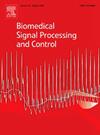MRI intracranial Neoplasm classification using hybrid LOA-based deep learning classifier
IF 4.9
2区 医学
Q1 ENGINEERING, BIOMEDICAL
引用次数: 0
Abstract
The detection and segmentation of brain tumors in MRI images are essential for accurate diagnosis and effective treatment planning. Current methodologies often struggle to maintain accuracy while efficiently processing large datasets. This research integrates advanced techniques in image preprocessing, feature extraction, and classification to improve brain tumor detection and segmentation. This proposed research employs Adaptive Median-Gaussian Filtering to reduce noise while preserving edges and fine details. For segmentation, we combine Kernel Density Estimation (KDE) with Fuzzy C-Means (FCM) clustering (KDFCM) to utilize local density variations for more precise results. Feature extraction is conducted using Histogram of Oriented Gradients (HOG), which is optimized with Particle Swarm Optimization (PSO) for efficient and robust image analysis. The classification utilizes the ResNeSt architecture with split-attention mechanisms, and the Lion Optimization Algorithm (LOA) fine-tunes the model parameters. The simulations were conducted using MATLAB 2021a. Experimental results demonstrate the effectiveness of the proposed methods, achieving high accuracy, precision, recall, and F-measure across various datasets, including the X-ray image dataset, FigShare and BTC Magnetic Resonance Imaging (MRI) datasets. The proposed algorithm achieved 99.41 % accuracy, 99.57 % precision, 99.12 % recall, and 99.52 % F-measure for FigShare Data, and 99.72 % accuracy, 99.85 % precision, 99.25 % recall, and 99.67 % F-measure for BTC Data, outperforming existing DL technology. This research highlights the potential of these methods for reliable and efficient brain tumor detection.
求助全文
约1分钟内获得全文
求助全文
来源期刊

Biomedical Signal Processing and Control
工程技术-工程:生物医学
CiteScore
9.80
自引率
13.70%
发文量
822
审稿时长
4 months
期刊介绍:
Biomedical Signal Processing and Control aims to provide a cross-disciplinary international forum for the interchange of information on research in the measurement and analysis of signals and images in clinical medicine and the biological sciences. Emphasis is placed on contributions dealing with the practical, applications-led research on the use of methods and devices in clinical diagnosis, patient monitoring and management.
Biomedical Signal Processing and Control reflects the main areas in which these methods are being used and developed at the interface of both engineering and clinical science. The scope of the journal is defined to include relevant review papers, technical notes, short communications and letters. Tutorial papers and special issues will also be published.
 求助内容:
求助内容: 应助结果提醒方式:
应助结果提醒方式:


